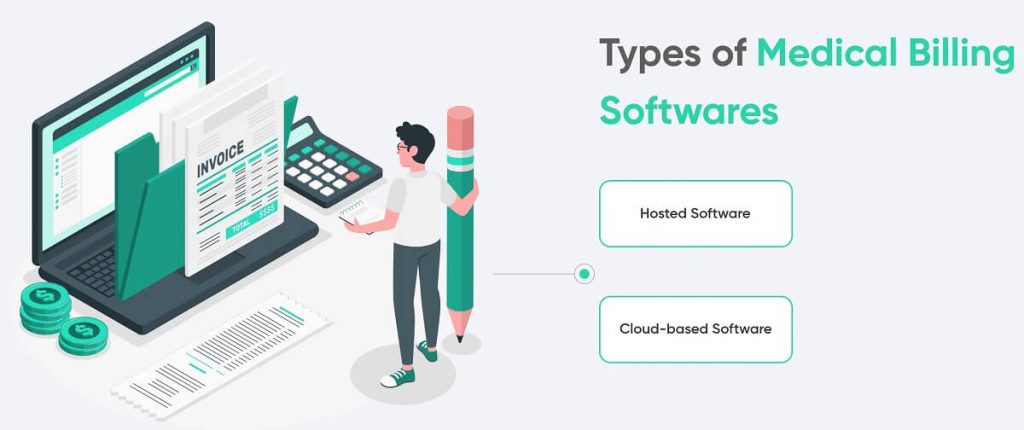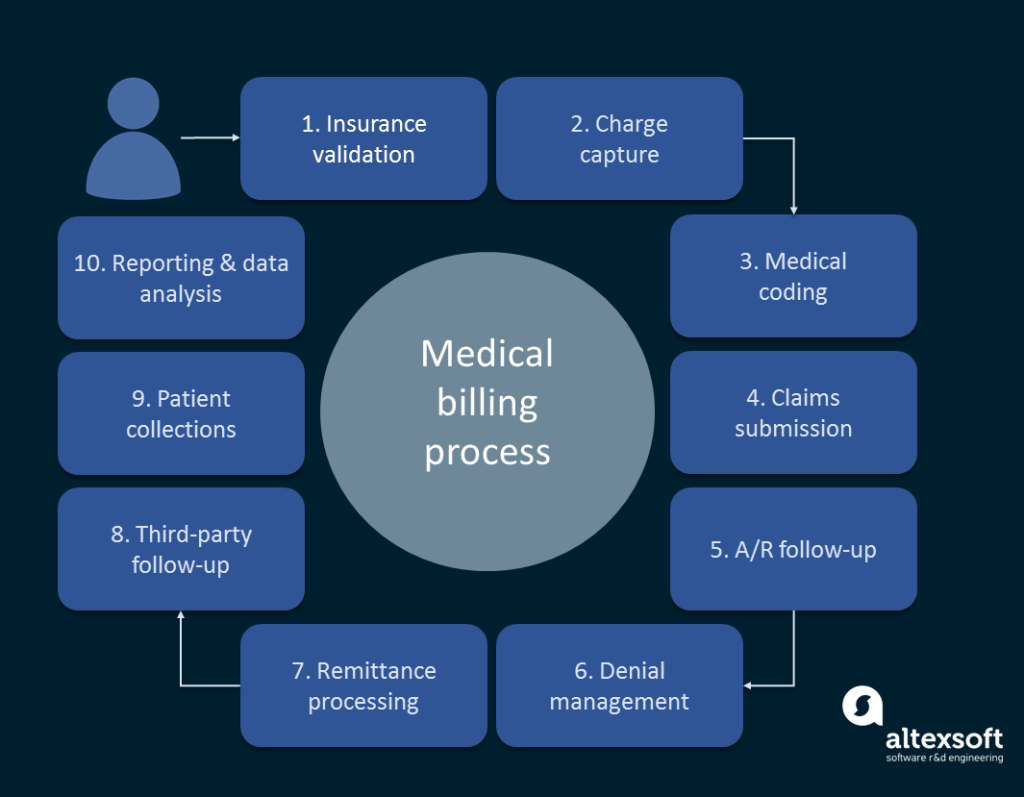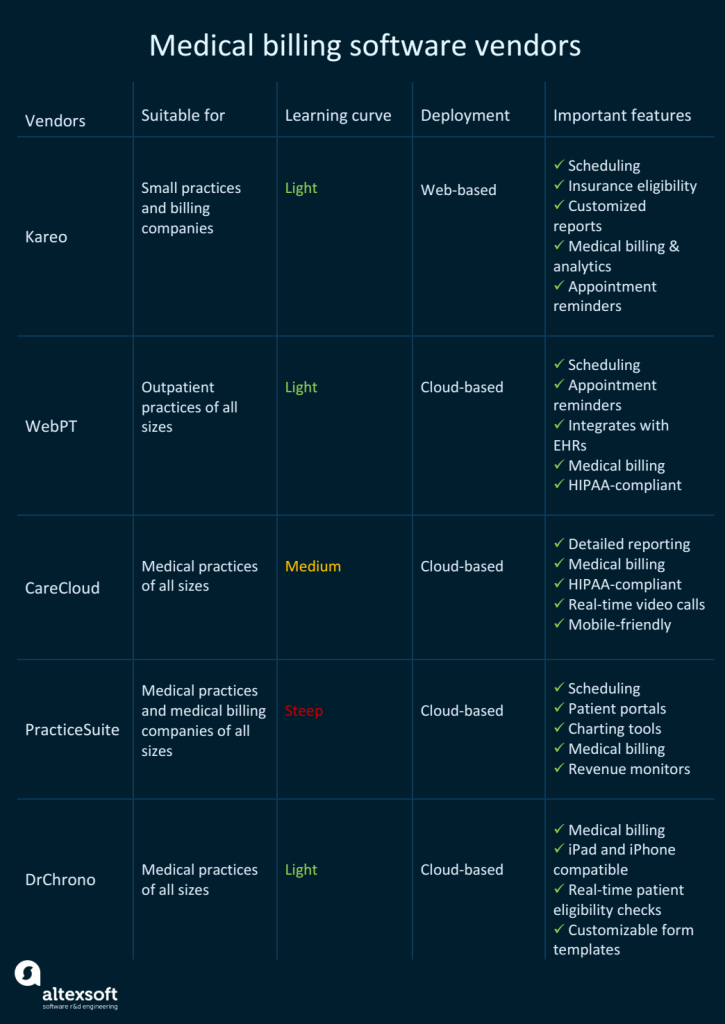In the world of healthcare administration, understanding the various types of medical billing systems is essential for streamlining operations, improving efficiency, and ensuring accurate and timely reimbursement. From the traditional paper-based systems to the more advanced electronic billing platforms, there are multiple options available to medical practices, hospitals, and insurance companies. In this article, we will explore the different types of medical billing systems and their key features, allowing you to make an informed decision based on the unique needs and requirements of your organization.

This image is property of sybridmd.com.
On-premise Medical Billing Systems
On-premise medical billing systems refer to software solutions that are installed and operated locally on healthcare providers’ own servers, networks, or computer systems. These systems store the patient information and handle the billing processes within the healthcare facility itself.
Advantages
One of the main advantages of on-premise medical billing systems is the increased control and data security they offer. Since the data is stored locally, healthcare providers have complete control over their information and can ensure compliance with data privacy regulations. Additionally, on-premise systems provide faster access to data since it is stored within the facility, resulting in quicker response times and reduced reliance on internet connectivity.
Disadvantages
However, on-premise medical billing systems have some drawbacks. The initial cost of implementing an on-premise system can be significant, as it involves purchasing and maintaining the necessary hardware and infrastructure. Upgrades and maintenance of the system are also the responsibility of the healthcare provider, which can add additional costs and complexity. Additionally, on-premise systems may lack the flexibility and scalability of cloud-based solutions, making it challenging to adapt to changing business needs.
Cloud-based Medical Billing Systems
Cloud-based medical billing systems utilize internet servers and resources to store and process healthcare providers’ data and handle their billing operations. These systems allow users to access the software and data remotely through a web browser, eliminating the need for physical on-site servers.
Advantages
Cloud-based medical billing systems offer several advantages. One of the key benefits is the cost-effectiveness, as healthcare providers can avoid the upfront investment in hardware and infrastructure. Instead, they pay a subscription fee based on usage, making it a more affordable option, especially for small practices. Cloud-based systems also provide greater flexibility and scalability, allowing healthcare providers to easily adjust their system’s capabilities as their practice grows or changes. Additionally, since the data is stored in the cloud, it can be accessed securely from anywhere with an internet connection, enabling remote work and improving collaboration.
Disadvantages
Despite the numerous benefits, cloud-based medical billing systems do have some disadvantages. Reliance on internet connectivity is a crucial factor, as system downtime or slow internet speeds can disrupt operations. Healthcare providers must also trust that their data is secure in the hands of the cloud service provider, which may raise concerns about data privacy and compliance with applicable regulations. Additionally, customization options may be limited in certain cloud-based systems, which could pose challenges for healthcare providers with unique billing requirements.
Integrated Medical Billing Systems
Integrated medical billing systems refer to software solutions that combine medical billing functionalities with other essential components of healthcare operations, such as electronic health records (EHR), scheduling, and patient management. These systems aim to streamline workflows by eliminating the need for separate software for different tasks, promoting efficiency and accuracy.
Advantages
The primary advantage of integrated medical billing systems is the seamless flow of information between various departments or functions within a healthcare facility. By integrating billing with other essential processes, healthcare providers can reduce administrative burden, minimize manual data entry, and prevent errors. This integration also enhances the patient experience, as it enables real-time access to patient information and promotes coordinated care among healthcare professionals. Additionally, integrated systems often offer built-in reporting and analytics capabilities, providing valuable insights into the financial health of the practice.
Disadvantages
However, integrated medical billing systems may have some disadvantages. Implementing an integrated system requires careful planning and coordination, as it involves integrating different software components, which can be complex and time-consuming. There is also the risk of system downtime or compatibility issues when updates or changes are made to one component of the system. Additionally, the cost of an integrated system may be higher compared to stand-alone solutions, especially if a healthcare provider already has separate software in place and needs to invest in new integrated solutions.
Stand-alone Medical Billing Systems
Stand-alone medical billing systems are software solutions specifically designed to handle the billing processes of healthcare providers. They operate independently and are not integrated with other software components, such as EHR or patient management systems.
Advantages
One of the advantages of stand-alone medical billing systems is their focused functionality. Since these systems are specifically designed for billing purposes, they often offer comprehensive features and robust billing capabilities. This specialization allows healthcare providers to have greater control and customization over their billing processes, tailoring the system to their specific needs. Stand-alone systems also provide a more straightforward implementation process, as they do not require integrating with other software components.
Disadvantages
However, stand-alone medical billing systems have some limitations. The lack of integration with other essential components, such as EHR or scheduling, can lead to manual data entry and potential errors. This can result in inefficiencies and duplication of efforts, as healthcare providers have to transfer data between different systems. Stand-alone systems may also lack the scalability and flexibility of integrated solutions, making it challenging to adapt to changing business needs. Additionally, using separate systems for different tasks might increase costs and the need for multiple vendor relationships.

This image is property of www.altexsoft.com.
Web-based Medical Billing Systems
Web-based medical billing systems, also known as browser-based or online systems, operate entirely through a web browser interface. These systems use internet connectivity to access the software and store data on remote servers, providing healthcare providers with the flexibility to access their billing information from any device with an internet connection.
Advantages
Web-based medical billing systems offer several advantages. The foremost benefit is the convenience and accessibility they provide. Healthcare providers can securely access the system and patient data from any location, making it an ideal option for remote work or multi-location practices. The centralized storage of data also reduces the risk of data loss or damage due to hardware failure. Additionally, web-based systems generally have automatic updates and backups, saving valuable time for healthcare providers. The easy scalability and lower upfront costs of web-based systems are also significant advantages.
Disadvantages
However, web-based medical billing systems have a few disadvantages to consider. As with cloud-based systems, internet connectivity is crucial for accessing and operating the system. Downtime or slow internet speeds can hinder productivity and disrupt regular workflows. Healthcare providers must also place trust in the security practices of the web-based system provider, ensuring that patient data is adequately protected. Customization options may also be limited in some web-based systems, preventing healthcare providers from tailoring the system to their specific needs.
Open Source Medical Billing Systems
Open-source medical billing systems are software solutions that are publicly available and free to use, modify, and distribute. These systems are developed collaboratively by a community of volunteers, and the source code is openly accessible and customizable.
Advantages
Open-source medical billing systems offer several advantages. The most significant benefit is the freedom and flexibility they provide to healthcare providers. Since the source code is openly available, users can modify and customize the system to fit their specific requirements. This means greater control over workflows, functionalities, and integration possibilities. Open-source systems also benefit from continuous community development and improvement, as a large user base contributes to enhancing the software and addressing bugs or security vulnerabilities. Cost-effectiveness is another advantage, as there are no licensing fees associated with using open-source software.
Disadvantages
However, there are a few disadvantages to consider when using open-source medical billing systems. Healthcare providers relying on open-source solutions may be responsible for their system’s technical maintenance and support unless they opt for professional services provided by third-party vendors. This can require technical expertise or additional costs. The extensive customization options available in open-source systems may also lead to complexity and potential compatibility issues when integrating with other software or data exchange with external entities. Additionally, the lack of formal support or a dedicated customer service team may present challenges if issues arise.

This image is property of www.altexsoft.com.
Proprietary Medical Billing Systems
Proprietary medical billing systems are software solutions developed by specific vendors and typically require the purchase of a license or subscription for use. These systems are developed and maintained by a single company, and the source code is not publicly accessible or modifiable.
Advantages
Proprietary medical billing systems come with several advantages. First and foremost, they offer comprehensive support and dedicated customer service from the vendor. Healthcare providers can rely on the vendor for technical assistance, system updates, and bug fixes. Proprietary systems often come with a wide range of features and functionalities tailored specifically for medical billing. They are also generally user-friendly, as vendors invest in usability and interface design to provide an intuitive experience. For healthcare providers who prefer a turnkey solution with minimal technical involvement, proprietary systems can be a convenient option.
Disadvantages
However, proprietary medical billing systems have a few disadvantages. The upfront costs associated with purchasing licenses or subscriptions can be significant. Healthcare providers must also consider ongoing maintenance fees and potential future investment in upgrades. Proprietary systems may offer limited customization options compared to open-source or customizable solutions, preventing healthcare providers from adapting the system to their specific needs. Vendor lock-in is also a concern, as switching to a different system can be cost-prohibitive and require significant data migration efforts. Additionally, reliance on a single vendor for support and updates introduces a level of dependency and potential disruption if the vendor discontinues the system or experiences financial difficulties.
Electronic Health Record (EHR) Integrated Medical Billing Systems
Electronic Health Record (EHR) integrated medical billing systems combine the functionalities of EHR and medical billing software into a unified system. These integrated solutions allow healthcare providers to seamlessly manage patient information, clinical data, and billing operations in one platform.
Advantages
The integration of EHR and medical billing provides numerous advantages. First, it eliminates the need for duplicative data entry and reduces the risk of errors or inconsistencies between patient records and billing information. Streamlining data management enhances accuracy and efficiency in both clinical and administrative processes. Integrated systems also enable real-time access to patient data during the billing process, allowing healthcare providers to address coding and documentation issues promptly. Additionally, the ability to generate financial reports based on clinical data enables data-driven decision-making and improved revenue management.
Disadvantages
However, there are a few disadvantages to consider with EHR integrated medical billing systems. Implementing an integrated solution may require extensive system configuration and data migration efforts, which can be time-consuming and disruptive. Coordination between EHR and billing functionalities may present challenges, particularly when updates or changes are made to one component of the system. Healthcare providers must also ensure that the system’s integration meets regulatory requirements and maintains data privacy and security. The cost of an integrated system may be higher compared to stand-alone solutions due to the additional functionalities and complexities involved.

This image is property of www.altexsoft.com.
Telemedicine Integrated Medical Billing Systems
Telemedicine integrated medical billing systems combine medical billing functionalities with telemedicine capabilities, allowing healthcare providers to bill and manage remote patient consultations. These systems enable seamless integration of billing processes with telemedicine platforms, ensuring accurate and efficient reimbursement for virtual healthcare services.
Advantages
Telemedicine integrated medical billing systems offer several advantages. One of the key benefits is the ability to streamline the billing process for telemedicine services. Healthcare providers can document and code virtual consultations directly within the billing system, reducing administrative burden and ensuring compliance with telehealth-specific billing requirements. Integrated systems also provide real-time access to patient charts and billing information during telemedicine encounters, enabling efficient documentation and accurate coding. Additionally, integration with telemedicine platforms can enhance billing accuracy by automatically capturing details of virtual visits and facilitating communication between telehealth providers and billers.
Disadvantages
Despite the advantages, telemedicine integrated medical billing systems have a few limitations. Implementing and maintaining an integrated system requires healthcare providers to carefully select compatible telemedicine and billing platforms, ensuring seamless communication and data exchange. The cost of integration and subscription fees for telemedicine software can also add to the overall expenses. Depending solely on telemedicine integrated systems may limit healthcare providers’ flexibility in choosing different telemedicine or billing solutions in the future. Additionally, connectivity issues during virtual consultations may hinder real-time access to patient data and billing information, affecting productivity and reimbursement accuracy.
Artificial Intelligence (AI) Assisted Medical Billing Systems
Artificial Intelligence (AI) assisted medical billing systems leverage advanced algorithms and machine learning capabilities to automate and optimize the billing processes. These systems use AI technologies to extract relevant information from medical records, identify potential coding errors, and provide recommendations for accurate and compliant billing.
Advantages
AI assisted medical billing systems offer several advantages. One of the primary benefits is increased accuracy and reduced coding errors. By analyzing medical records and patterns in coding history, AI algorithms can identify potential discrepancies or incomplete documentation, ensuring more accurate billing and reducing the risk of claim denials. These systems also improve operational efficiency by automating time-consuming tasks, such as coding reviews and claim scrubbing. AI assisted systems can provide valuable insights and analytics, offering healthcare providers data-driven recommendations for optimizing billing strategies and revenue management.
Disadvantages
However, there are a few disadvantages to consider with AI assisted medical billing systems. The implementation and configuration of AI technologies require careful planning and training to ensure optimal performance and accuracy. Healthcare providers must also consider the cost of implementing AI systems, as the initial investment in technology and ongoing maintenance may be significant. Data privacy and security concerns may arise, as AI systems require access to sensitive patient records. Ensuring compliance with privacy regulations and securing patient information becomes paramount. Additionally, healthcare providers must be prepared to address any potential resistance or apprehension from staff towards AI automation, ensuring effective change management and training.
